

Copyright 2012 by General Mills, Minneapolis, Minnesota. All rights reserved. Published by Wiley Publishing, Inc., Hoboken, New Jersey Published simultaneously in Canada No part of this publication may be reproduced, stored in a retrieval system, or transmitted in any form or by any means, electronic, mechanical, photocopying, recording, scanning, or otherwise, except as permitted under Section 107 or 108 of the 1976 United States Copyright Act, without either the prior written permission of the Publisher, or authorization through payment of the appropriate per-copy fee to the Copyright Clearance Center, Inc., 222 Rosewood Drive, Danvers, MA 01923, (978) 750-8400, fax (978) 750-4470, or on the web at www.copyright.com. Requests to the Publisher for permission should be addressed to the Permissions Department, John Wiley & Sons, Inc., 111 River Street, Hoboken, NJ 07030, (201) 748-6011, fax (201) 748-6008, or online at http://www.wiley.com/go/permissions. Trademarks: Wiley and the Wiley Publishing logo are trademarks or registered trademarks of John Wiley & Sons and/or its affiliates. All other trademarks referred to herein are trademarks of General Mills.
Wiley Publishing, Inc., is not associated with any product or vendor mentioned in this book. Limit of Liability/Disclaimer of Warranty: While the publisher and author have used their best efforts in preparing this book, they make no representations or warranties with respect to the accuracy or completeness of the contents of this book and specifically disclaim any implied warranties of merchantability or fitness for a particular purpose. No warranty may be created or extended by sales representatives or written sales materials. The advice and strategies contained herein may not be suitable for your situation. You should consult with a professional where appropriate. Neither the publisher nor author shall be liable for any loss of profit or any other commercial damages, including but not limited to special, incidental, consequential, or other damages.
For general information on our other products and services or for technical support, please contact our Customer Care Department within the United States at (877) 762-2974, outside the United States at (317) 572-3993 or fax (317) 572-4002. Wiley also publishes its books in a variety of electronic formats. Some content that appears in print may not be available in electronic books. For more information about Wiley products, visit our web site at www.wiley.com. Library of Congress Cataloging-in-Publication Data: Pillsbury easy as pie. cm. cm.
Includes index. ISBN 978-0-470-48553-8 (cloth) 1. Pies. 2. Brand name products. TX773.P5735 2010 641.8'652dc22 2009005652 Manufactured in China 10 9 8 7 6 5 4 3 2 1 Cover photo: General Mills Editorial Director: Jeff Nowak Publishing Manager: Christine Gray Cookbook Manager and Editor: Lois Tlusty Recipe Development and Testing: Pillsbury Kitchens Photography: General Mills Photography Studios and Image Library Photographer: Val Bourassa Food Stylist: Nancy Johnson Wiley Publishing, Inc.
Publisher: Natalie Chapman Associate Publisher: Jessica Goodman Executive Editor: Anne Ficklen Editor: Adam Kowit Editorial Assistant: Cecily McAndrews Production: Amy Zarkos and Kristi Hart Cover Design: Suzanne Sunwoo Art Director and Interior Design: Tai Blanche Layout: Indy Composition Services Photography Art Direction: Chris Everett/See Design, Inc. Prop Stylist: Michele Joy Manufacturing Manager: Kevin Watt  Dear Friends, Easy as pie, a well-known phrase that can be traced back to 1887, means very easy. Pillsbury Easy as Pie cookbook does just thatmakes pie baking very easy with the help of Pillsbury refrigerated pie crust. Making a perfect pie crust can be a challenge. Starting with refrigerated pie crust ensures youll get a tender flaky crust every time. Then get ready for rave reviews (its up to you whether to share your secret for perfect pie crust made easy).
Dear Friends, Easy as pie, a well-known phrase that can be traced back to 1887, means very easy. Pillsbury Easy as Pie cookbook does just thatmakes pie baking very easy with the help of Pillsbury refrigerated pie crust. Making a perfect pie crust can be a challenge. Starting with refrigerated pie crust ensures youll get a tender flaky crust every time. Then get ready for rave reviews (its up to you whether to share your secret for perfect pie crust made easy).
Scrumptious homemade pies and tarts make any occasion extra-special. Enjoy the fall harvest with a juicy , just to say I love you! Pies arent just for dessert. Check out the chapter, and youre sure to find a pie or quiche for brunch, a quick dinner or any time youre having people over. After all, who can resist a warm, mouthwatering pie fresh from the oven? Lets bake a pie and make tonight special! Warmly,  Pillsbury Editor easy as pie Start with the Right Pie Pan Refrigerated pie crusts are designed for 8-inch or 9-inch pie pans and 10-inch tart pans. Use the size pan that is called for in the recipes. If the pan is too small, there will be too much fillinga two-crust pie could bubble over in the oven during baking.
Pillsbury Editor easy as pie Start with the Right Pie Pan Refrigerated pie crusts are designed for 8-inch or 9-inch pie pans and 10-inch tart pans. Use the size pan that is called for in the recipes. If the pan is too small, there will be too much fillinga two-crust pie could bubble over in the oven during baking.
A pan too large will result in a low-volume pie. A glass pie plate or dull-metal pie pan is best because the crust bakes evenly to a golden brown and is tender and flaky. A shiny or disposable aluminum pan reflects heat and prevents the crust from browning, and results in an underbaked bottom crust. A dark pan absorbs heat, which causes too much browning. Nonstick pie pans can cause an unfilled one-crust pie to shrink excessively during baking because the crust cant cling to the side of the pan. To hold the crust in place, be sure the decorative edge (fluted edge) extends over the edge of the pan and is firmly pressed under the edge.
In addition, lining the unbaked crust with foil and filling it with raw rice or beans helps to prevent shrinkage. Handle Pie Crust Correctly Let refrigerated crusts stand at room temperature for 15 minutes, or microwave one pouch on Defrost for 10 to 20 seconds before unrolling. If crusts are frozen, remove frozen crusts from box and let stand at room temperature 60 to 90 minutes before unrolling. Slowly and gently unroll in the pie plate. To keep the crust from pulling from the side of the pie plate during baking, press it firmly against the side and bottom of the pie plate. Be sure not to stretch the crust.
Handling Pie Crust  Unroll the crust slowly and gently into the plate
Unroll the crust slowly and gently into the plate  Gently press the crust against the side of the pie plate. Baking Unfilled Pie Crust To prevent bubbles from forming in an unfilled one-crust pie, generously prick the side and bottom of the crust with a fork before baking. If bubbles do form, press them down gently with the back of a wooden spoon. Continue baking until the crust is done. Keep the baked edge from getting too brown by covering it with foil after the first 15 minutes of baking or as directed in the recipe. Use a 12-inch square of foil; cut out a 7-inch circle from the center, and gently fold the foil ring around the crusts edge.
Gently press the crust against the side of the pie plate. Baking Unfilled Pie Crust To prevent bubbles from forming in an unfilled one-crust pie, generously prick the side and bottom of the crust with a fork before baking. If bubbles do form, press them down gently with the back of a wooden spoon. Continue baking until the crust is done. Keep the baked edge from getting too brown by covering it with foil after the first 15 minutes of baking or as directed in the recipe. Use a 12-inch square of foil; cut out a 7-inch circle from the center, and gently fold the foil ring around the crusts edge.
Or use strips of foil on the edge of the crust. Be carefulthe pie will be hot if you add the foil during baking. Preparing Pie Crust for Baking 



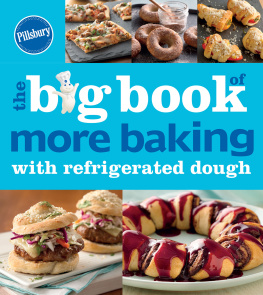
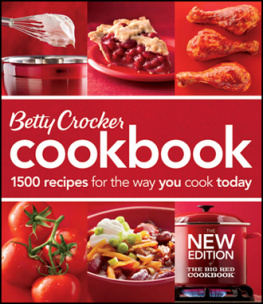
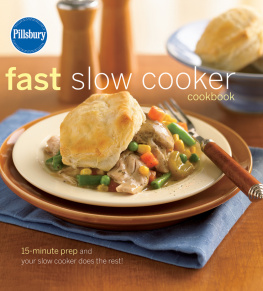
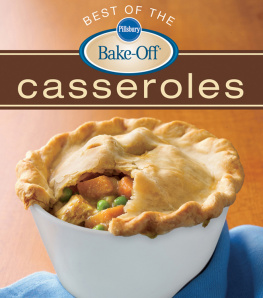
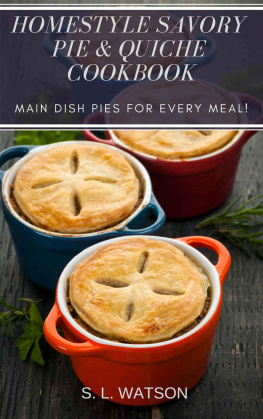

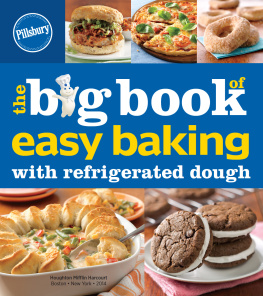
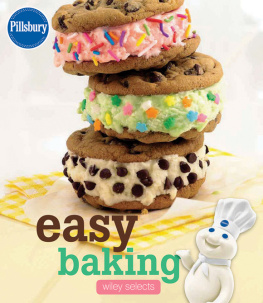
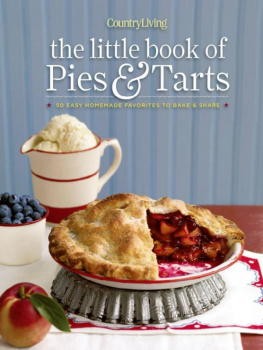
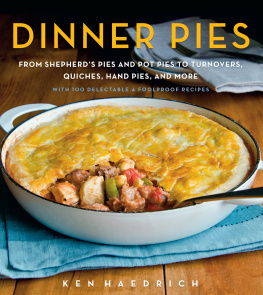


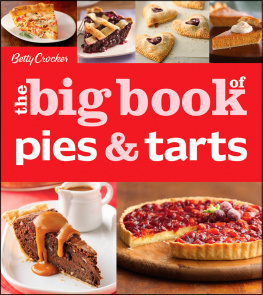
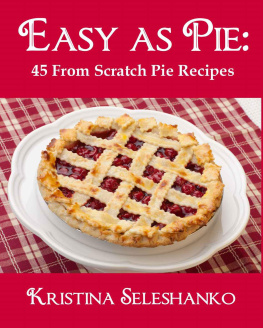
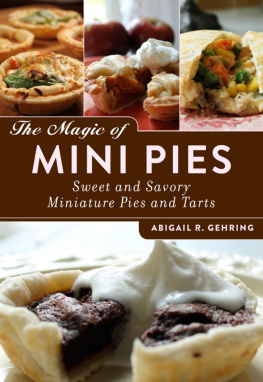

 Copyright 2012 by General Mills, Minneapolis, Minnesota. All rights reserved. Published by Wiley Publishing, Inc., Hoboken, New Jersey Published simultaneously in Canada No part of this publication may be reproduced, stored in a retrieval system, or transmitted in any form or by any means, electronic, mechanical, photocopying, recording, scanning, or otherwise, except as permitted under Section 107 or 108 of the 1976 United States Copyright Act, without either the prior written permission of the Publisher, or authorization through payment of the appropriate per-copy fee to the Copyright Clearance Center, Inc., 222 Rosewood Drive, Danvers, MA 01923, (978) 750-8400, fax (978) 750-4470, or on the web at www.copyright.com. Requests to the Publisher for permission should be addressed to the Permissions Department, John Wiley & Sons, Inc., 111 River Street, Hoboken, NJ 07030, (201) 748-6011, fax (201) 748-6008, or online at http://www.wiley.com/go/permissions. Trademarks: Wiley and the Wiley Publishing logo are trademarks or registered trademarks of John Wiley & Sons and/or its affiliates. All other trademarks referred to herein are trademarks of General Mills.
Copyright 2012 by General Mills, Minneapolis, Minnesota. All rights reserved. Published by Wiley Publishing, Inc., Hoboken, New Jersey Published simultaneously in Canada No part of this publication may be reproduced, stored in a retrieval system, or transmitted in any form or by any means, electronic, mechanical, photocopying, recording, scanning, or otherwise, except as permitted under Section 107 or 108 of the 1976 United States Copyright Act, without either the prior written permission of the Publisher, or authorization through payment of the appropriate per-copy fee to the Copyright Clearance Center, Inc., 222 Rosewood Drive, Danvers, MA 01923, (978) 750-8400, fax (978) 750-4470, or on the web at www.copyright.com. Requests to the Publisher for permission should be addressed to the Permissions Department, John Wiley & Sons, Inc., 111 River Street, Hoboken, NJ 07030, (201) 748-6011, fax (201) 748-6008, or online at http://www.wiley.com/go/permissions. Trademarks: Wiley and the Wiley Publishing logo are trademarks or registered trademarks of John Wiley & Sons and/or its affiliates. All other trademarks referred to herein are trademarks of General Mills.  Dear Friends, Easy as pie, a well-known phrase that can be traced back to 1887, means very easy. Pillsbury Easy as Pie cookbook does just thatmakes pie baking very easy with the help of Pillsbury refrigerated pie crust. Making a perfect pie crust can be a challenge. Starting with refrigerated pie crust ensures youll get a tender flaky crust every time. Then get ready for rave reviews (its up to you whether to share your secret for perfect pie crust made easy).
Dear Friends, Easy as pie, a well-known phrase that can be traced back to 1887, means very easy. Pillsbury Easy as Pie cookbook does just thatmakes pie baking very easy with the help of Pillsbury refrigerated pie crust. Making a perfect pie crust can be a challenge. Starting with refrigerated pie crust ensures youll get a tender flaky crust every time. Then get ready for rave reviews (its up to you whether to share your secret for perfect pie crust made easy). Pillsbury Editor easy as pie Start with the Right Pie Pan Refrigerated pie crusts are designed for 8-inch or 9-inch pie pans and 10-inch tart pans. Use the size pan that is called for in the recipes. If the pan is too small, there will be too much fillinga two-crust pie could bubble over in the oven during baking.
Pillsbury Editor easy as pie Start with the Right Pie Pan Refrigerated pie crusts are designed for 8-inch or 9-inch pie pans and 10-inch tart pans. Use the size pan that is called for in the recipes. If the pan is too small, there will be too much fillinga two-crust pie could bubble over in the oven during baking. Unroll the crust slowly and gently into the plate
Unroll the crust slowly and gently into the plate  Gently press the crust against the side of the pie plate. Baking Unfilled Pie Crust To prevent bubbles from forming in an unfilled one-crust pie, generously prick the side and bottom of the crust with a fork before baking. If bubbles do form, press them down gently with the back of a wooden spoon. Continue baking until the crust is done. Keep the baked edge from getting too brown by covering it with foil after the first 15 minutes of baking or as directed in the recipe. Use a 12-inch square of foil; cut out a 7-inch circle from the center, and gently fold the foil ring around the crusts edge.
Gently press the crust against the side of the pie plate. Baking Unfilled Pie Crust To prevent bubbles from forming in an unfilled one-crust pie, generously prick the side and bottom of the crust with a fork before baking. If bubbles do form, press them down gently with the back of a wooden spoon. Continue baking until the crust is done. Keep the baked edge from getting too brown by covering it with foil after the first 15 minutes of baking or as directed in the recipe. Use a 12-inch square of foil; cut out a 7-inch circle from the center, and gently fold the foil ring around the crusts edge.